Architectus elevates Flinders University’s Adelaide presence with a culturally resonant vertical campus, amalgamating advanced learning environments with industry integration and community engagement.

September 12th, 2024
Design comes to the fore at Flinders City Campus, taking higher education in South Australia to new heights. The vertical city campus for Flinders University was conceived by Architectus, in the centre of Adelaide. The campus signals a new era for Flinders University, fostering collaboration and empowering learning opportunities for students.
With a locale flanked by the Riverbank precinct beside Adelaide Railway Station, the campus acts as a bridge between Flinders University and key technology, business, government, law and arts hubs. This strategic location is set to heighten research initiatives and industry partnerships, providing students with opportunities for engagement and growth.

“Design cues were taken from the site, which is a significant Kaurna meeting place, together with the history of the Climbing Tree,” says Andrew Schunke, Studio Leader at Architectus. “First Nations people used Wadna (wooden pegs) to climb the magnificent eucalyptus trees that line the banks of the Karrawirra Pari (River Torrens), to hunt possums and survey the land. The scars can still be seen on the trees today. The flora and foliage as well as the Climbing Tree narrative are expressed in timber forms and materiality throughout the fitout.”
In considering the ‘place of meeting,’ the layout and positioning of common learning facilities improve collaboration and circulation. The eight-level campus features multi-mode learning and teaching spaces as well as student-led study zones including a law library, a Moot Court, a staff workplace, event facilities, outdoor terraces and an executive education suite – respectively digitally equipped and intuitive to use. “This layout allows students to use the spaces as they need and want; to socialise, to study, to rest but it also makes the floorplate highly adaptable. Depending on future needs, flexibility is accommodated generally through the middle of the floorplates. On the combined teaching and learning and workplace floors, the staff area is at one end of the floorplate, with learning and teaching at the other. The space in the middle is flexible and can enable either function to grow,” says Diana Rosenthal, Principal at Architectus.

Schunke continues: “On the lower levels of the building, there is a commercial lobby with a large void, and the floorplate slowly grows as you move up the building. Everything radiates out from the interconnecting stairs, landing on each floor at collaborative informal student-focused spaces. Emanating out from there are teaching and learning spaces, meeting areas, quiet informal spaces, libraries, balconies and staff spaces.”
While the decision may deviate from the norm, the learning and teaching settings are purposely intertwined with the academic workplace to promote collaborative opportunities between staff and students. Schunke explains further: “The project leaps forward in higher education by providing a purpose-built vertical campus complete with learning and teaching and workplace environments positioned to strengthen industry engagement and collaboration across colleges and degrees to position student success.”
Related: Flinders Uni HMRC also by Architectus

Timber structures and materials shape the main building vestibule, reinterpreting Wadna through architectural details, with tactile design features crafted locally. Complementing the form, the interior layout is influenced by native flora and riverscape. Earthy tones dominate the lower levels, transitioning to ochres and warm grey bark tones in the middle, and culminating in leaf-type colours of treetops at the upper levels. This staging of materiality and colour aids intuitive wayfinding throughout the building.
“Vertically, the palette reflects a great River Red Gum with colour changing per level whilst the timber detailing is consistent throughout. We’ve also placed a strong focus on acoustic control, with custom textured ceilings helping to minimise noise reverberation, especially in the larger, informal spaces. These acoustic elements also help to create a softness, texture, and warmth to the space. The rich materiality of the timbers, vinyl, carpets, textured wall paneling, upholsteries and paints are not what you may traditionally see in learning spaces,” explains Schunke.
Architectus
architectus.com.au
Photography
Shannon McGrath





More on designing for student experience in this Q&A with Architectus
INDESIGN is on instagram
Follow @indesignlive
A searchable and comprehensive guide for specifying leading products and their suppliers
Keep up to date with the latest and greatest from our industry BFF's!

For those who appreciate form as much as function, Gaggenau’s latest induction innovation delivers sculpted precision and effortless flexibility, disappearing seamlessly into the surface when not in use.
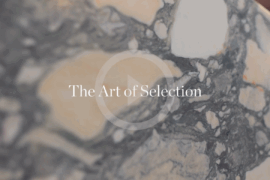
CDK Stone’s Natasha Stengos takes us through its Alexandria Selection Centre, where stone choice becomes a sensory experience – from curated spaces, crafted details and a colour-organised selection floor.
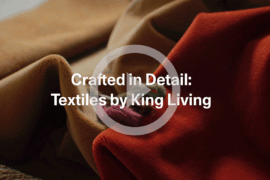
For a closer look behind the creative process, watch this video interview with Sebastian Nash, where he explores the making of King Living’s textile range – from fibre choices to design intent.

At the Munarra Centre for Regional Excellence on Yorta Yorta Country in Victoria, ARM Architecture and Milliken use PrintWorks™ technology to translate First Nations narratives into a layered, community-led floorscape.
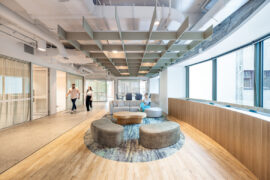
Milliken’s ‘Reconciliation Through Design’ initiative is amplifying the voices of Aboriginal and Torres Strait Islander artists, showcasing how cultural collaboration can reshape the design narrative in commercial interiors.
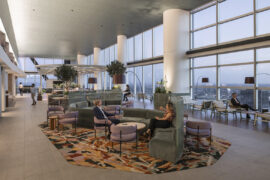
Designed by Woods Bagot, the new fit-out of a major resources company transforms 40,000-square-metres across 19 levels into interconnected villages that celebrate Western Australia’s diverse terrain.

In an industry where design intent is often diluted by value management and procurement pressures, Klaro Industrial Design positions manufacturing as a creative ally – allowing commercial interior designers to deliver unique pieces aligned to the project’s original vision.
The internet never sleeps! Here's the stuff you might have missed

Former INDE Luminary LeAmon joins the Design Institute of Australia (DIA) following more than a decade as the inaugural Curator of Contemporary Design and Architecture at the National Gallery of Victoria (NGV).
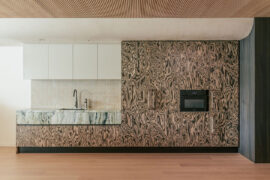
Trust sits at the core of Everton Buildings’ new office, where Ambit Curator was given licence to move beyond convention and deliver a workplace defined by vision, materiality and assured detail.